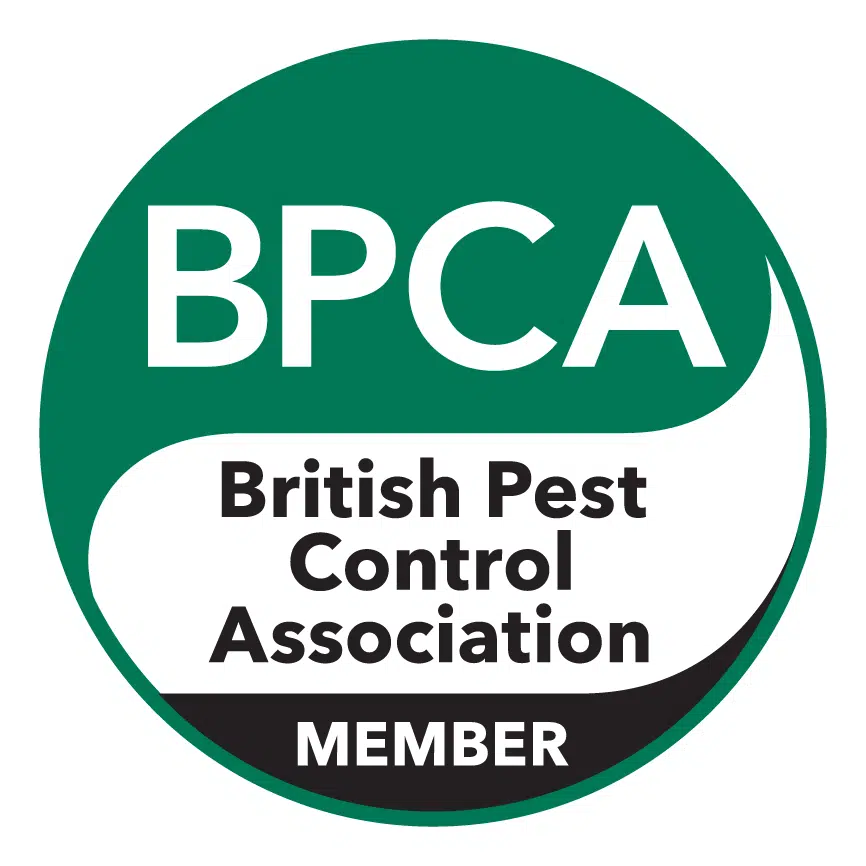Adult bed bugs are visible to the naked eye, about the size of an apple seed, and are considered small insects, though they often hide deep in mattresses, skirting boards, and furniture seams.



Yes, although bed bugs are tiny, adults are visible to the naked eye and roughly the size of an apple seed. They often hide close to where people sleep, such as mattress seams, bed frames, and headboards, but can also be found in furniture joints, plug sockets, and other small crevices.
Bed bugs are nocturnal, feeding at night and retreating to dark hiding places during the day. If you spot live bugs or activity in daylight, it usually means a heavy infestation. Typical signs include small blood spots, dark faecal specks on bedding, and shed skins.
Eggs and young nymphs are harder to see, as they are pale and tiny, but adults become more noticeable after feeding. Always inspect carefully using a torch and contact a professional pest control company if you notice any signs of bed bugs.

Worried about bed bugs lurking in your home? Wondering what causes bed bugs? Knowing how to spot these crafty pests can save you a lot of bother. When inspecting your bed, be sure to carefully check both the mattress and box spring for signs of bed bugs, especially around seams, piping, tags, and cracks. Here’s a straightforward guide to checking for bed bugs:
Strip off your bedding and inspect the mattress and box spring, focusing on seams, folds, and labels.
Look for tiny reddish-brown bugs (about the size of an apple pip), dark faecal spots, shed skins, or blood marks.
Don’t miss under the mattress and along the bed base edges.
Check headboards, bedside tables, and upholstered chairs. Bed bugs love nooks and crannies, so use a torch to peek into tight spots like screw holes, wooden joints, and electrical outlets.
Inspect skirting boards, wallpaper seams, and even plug sockets near the bed. You might spot small blood stains or dark specks (bed bug droppings) as telltale signs.
If you’ve been travelling, examine suitcases, rucksacks, and clothing—especially seams and pockets. Bed bugs often hitch a lift home this way.
A magnifying glass can help you spot eggs (tiny, white, and pearl-like) or nymphs (smaller, translucent versions of adults). For tricky areas, slide a credit card along crevices to flush them out.
Top Tip: Bed bugs are nocturnal, so checking at night with a torch might catch them on the move. They can be very hard to find in light infestations, so we always recommend contacting one of our professionals. Read our full page dedicated to how to check for bed bugs.
Bed bugs are small but have specific traits that distinguish them from other bugs. It is important to correctly identify bed bugs, as they can be confused with other small insects due to their similar appearance and misleading bite symptoms. They’re flat, wingless insects visible to the naked eye, though they can easily be confused with other pests like beetles. To identify bed bugs, look for the following:
Colour: Bed bugs range from translucent to dark reddish-brown.
Size: Adults typically measure 4 to 5 millimetres, resembling an apple seed in shape and size.
Shape: Their bodies are oval and flattened, allowing them to hide in crevices and narrow spaces.
Movement: Bed bugs can’t fly but are skilled at crawling. You may see one moving quickly across bed sheets or other surfaces.
Bed bugs are nocturnal creatures, primarily active at night when humans are sleeping, which often makes their presence harder to detect. Therefore, it’s crucial to conduct thorough inspections and consult us to address infestations promptly. One of the easiest ways to check is to examine your bedding and mattress seams when changing bedding, as well as cracks and crevices near sleeping areas. If in doubt, give one of our professionals a call for free advice.
Because bed bugs hide so well during the day, it’s usually easier to spot their signs rather than the bugs themselves. Many people don’t realize they have an infestation until they wake up with itchy bites—bed bug bites often appear in clusters or lines after the bugs feed at night.
Other signs include bloody black fecal stains, blood marks, or dark spots on bed sheets, clothes, or soft furniture. Bed bugs also shed translucent skins, which can be hard to spot. You may also notice bed bug eggs—very small and white in colour. The signs of bed bugs may vary depending on their life cycle stage, as eggs, nymphs, and adults leave different evidence behind.
If you’re unsure about an infestation at your home or business, place bed bug monitors around beds to help detect them. These monitors use a blood meal substitute on a sticky surface to attract bed bugs. You can expect to see them on the monitors within a week if they’re present. We have bed bug monitors available to order here, or contact one of our experts today to discuss your concerns.
Even a severe bed bug infestation can be hard to spot. Usually, the first signs are bites on the body, which you might confuse with flea bites or other bug bites. If you’re in doubt, bed bug monitors can be placed around the bed and in common hiding places; be sure to check all rooms in the property for signs of infestation to detect their presence.
Bedbugs are usually about the size of an apple seed, which is about 5 to 7 millimetres long. Bed bugs are small insects.
Baby bed bugs aren’t usually visible to the naked eye unless they’ve eaten recently. They’re very small and translucent to whitish-yellow in colour.
Bedbugs can be identified by their brown to reddish-brown colour and oval-shaped or elongated body.
Dead bed bugs leave behind red or rust-coloured stains on bedsheets or mattresses when crushed, as well as dark dots of bedbug poop and small eggs or egg shells.
Bedbugs have a life cycle that includes development from eggs to nymphs to adults. Their different life stages affect how easily they can be seen and how challenging they are to eliminate.
Bedbugs aren’t only found in beds! They can also be found in or around electrical sockets, furniture, curtain folds, drawer joints, loose wallpaper, and chair seams – basically anywhere they can find a food source.
Bed bugs are more than a nuisance — their bites can cause itching, redness, and swelling, and in some cases trigger allergic reactions or secondary skin infections from scratching.
Infestations can also affect mental well-being. The stress and lack of sleep caused by bed bugs often lead to anxiety, insomnia, and even depression, particularly if the problem persists.
Early detection is vital. Check mattress seams, bed frames, and furniture for dark spots, blood marks, or live bugs. Prevent infestations by sealing cracks, inspecting second-hand furniture, and checking hotel rooms when travelling.
If you find signs of activity, act fast. Professional bed bug heat treatment is the most effective way to eliminate bed bugs and their eggs in one visit, helping protect both your health and your home.
If you think you have a bed bug infestation at your home or business, act fast. To effectively rid your space of bed bugs, it is important to use several methods, such as chemical treatments, heat, and other proactive measures, to ensure complete elimination and prevent re-infestation. Bed bugs can live up to 12 months and lay over 500 eggs in that time, giving them plenty of opportunities to multiply.
Bed bug treatments work best when infestations are detected early and eradicated permanently. It’s always best to contact a professional company to ensure complete eradication. As part of the process, using a vacuum cleaner to remove bed bugs from infested areas can help control and eliminate the infestation. Our friendly bed bug heat treatment team at ThermoPest will be happy to discuss your options and answer any questions you may have. Don’t let a bed bug infestation ruin your working or living conditions.
Leading experts in bed bug control
Guaranteed quick and rapid responses to urgent infestations
For ongoing problems, use our preventative contracts
Yes, bed bugs are visible to the naked eye. An adult bed bug is reddish-brown, flat, and oval-shaped, approximately the size of an apple seed (4–5mm). However, finding them is challenging because they are nocturnal and avoid light.
Call us on 0808 189 2310 – or complete our quote form below.
Speak to a bed bug expert today!
Enter Your Details To Request A Call Back
Enter Your Details To Request A Call Back
Enter Your Details To Request A Call Back
Enter Your Details To Request A Call Back
Enter Your Details To Request A Call Back
Enter Your Details To Request A Call Back